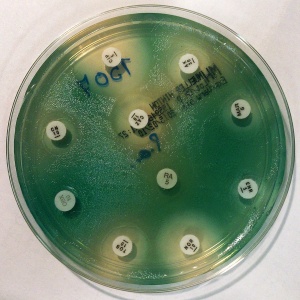
This paper describes the susceptibility of organisms such as bacteria to biocides such as antibiotics, insecticides and herbicide as a beneficial ecosystem service, since susceptible organisms can prevent the spread of biocide resistance by outcompeting resistant organisms (that is, in biocide-free environments). This framing is distinct from many other viewpoints, which focus on the negative costs of biocide resistance.
The paper also introduces a framework for assessing a safe operating space for biocide susceptibility, using six variables:
- Antibiotic resistance in Gram-negative bacteria
- Antibiotic resistance in Gram-positive bacteria
- Insect susceptibility to genetically engineered Bt-cropping systems
- Plant glyphosate susceptibility in genetically engineered herbicide-resistant cropping systems
- Insecticide susceptibility
- Herbicide susceptibility
According to the paper, antibiotic resistance in Gram-negative bacteria has exceeded a safe level globally, Bt-crop and herbicide-resistant crop susceptibility are outside the safe zone in some geographic regions, and the state of the other three measures in uncertain.
Abstract
Rising levels of antimicrobial and pesticide resistance increasingly undermine human health and systems for biomass production, and emphasize the sustainability challenge of preserving organisms susceptible to these biocides. In this Review, we introduce key concepts and examine dynamics of biocide susceptibility that must be governed to address this challenge. We focus on the impact of biocides on the capacity of susceptible organisms to prevent spread of resistance, and we then review how biocide use affects a broader suite of ecosystem services. Finally, we introduce and assess the state of what we term the Anthropocene operating space of biocide susceptibility, a framework for assessing the potential of antibiotic and pesticide resistance to undermine key functions of human society. Based on current trends in antibiotic, insecticide and herbicide resistance, we conclude that the states of all six assessed variables are beyond safe zones, with three variables surpassed regionally or globally.
Reference
Jørgensen, P. S. et al. (2018) ‘Antibiotic and pesticide susceptibility and the Anthropocene operating space’, Nature Sustainability, 1(11), pp. 632–641.
Read the full paper here. See also the Foodsource resource Why does antibiotic resistance matter?







Post a new comment »